Madeline Little’s URAP experience: A semester spent “plugging away” rehousing the UCMP tar pit collections!
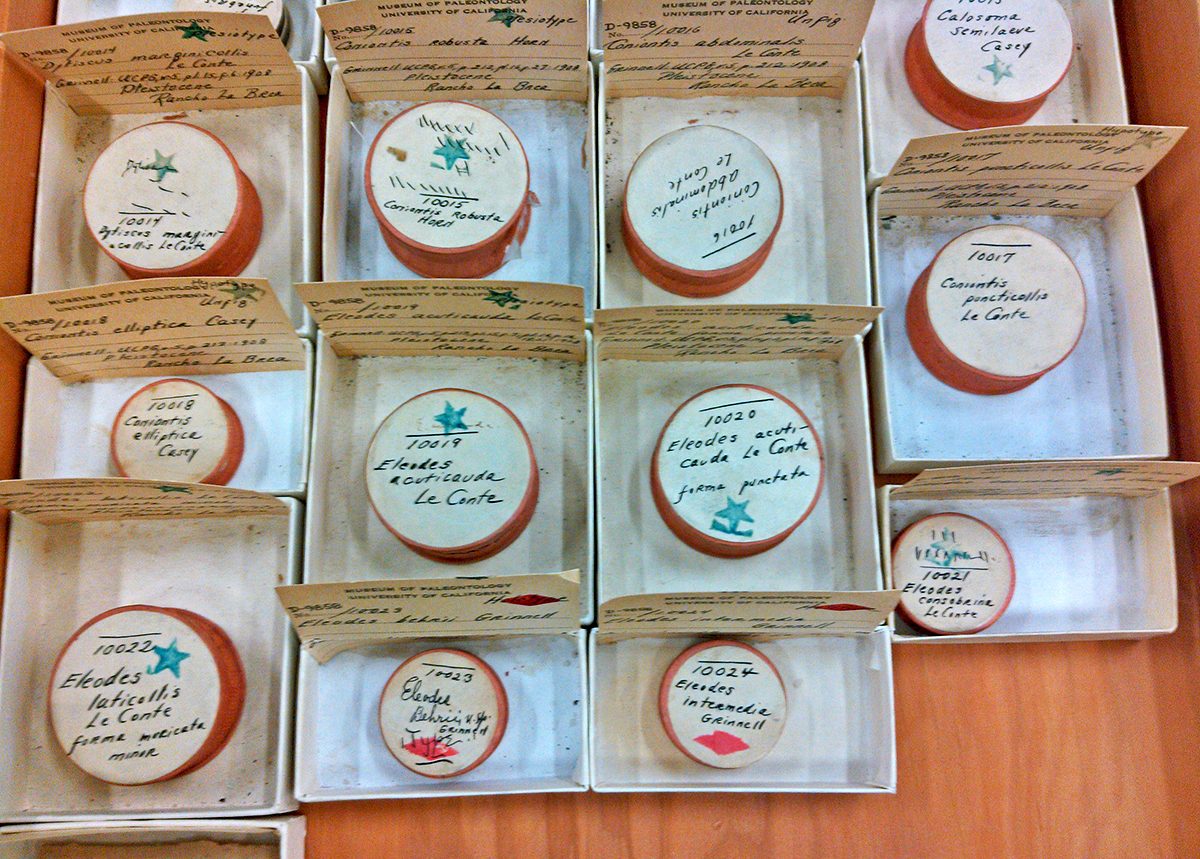
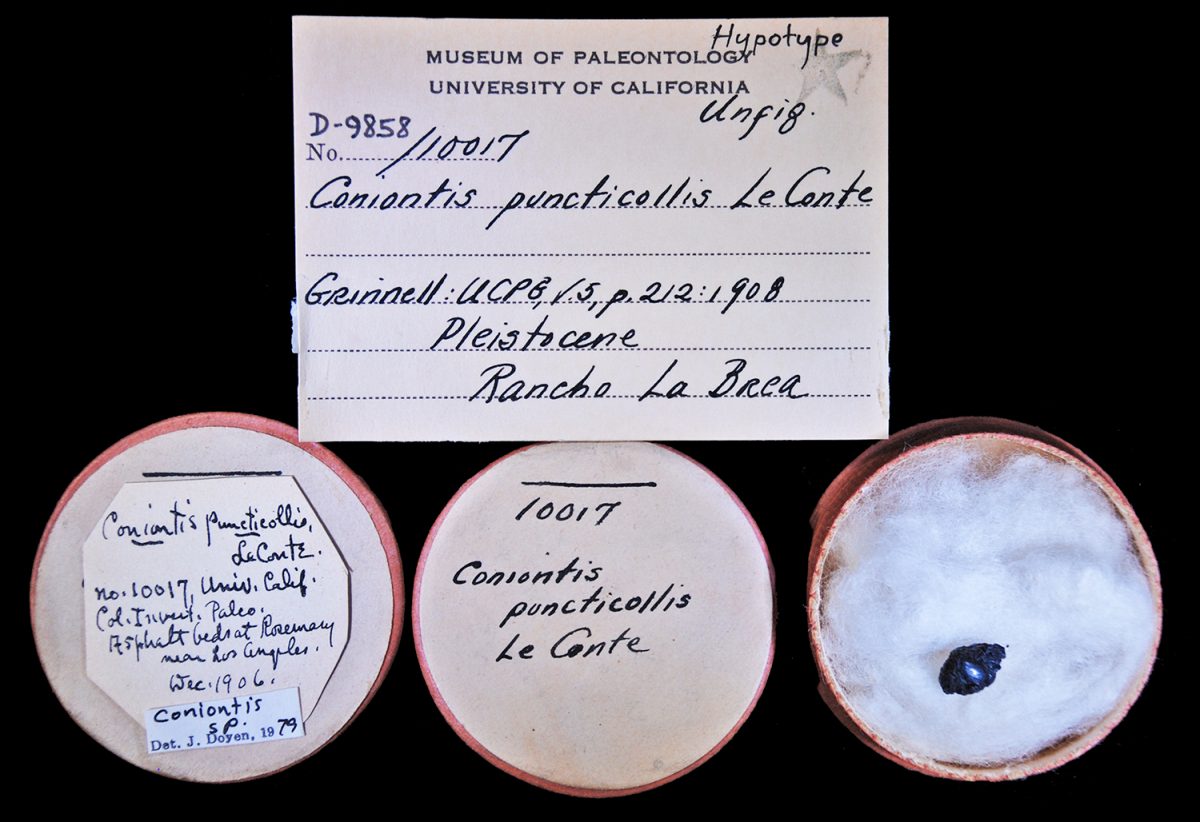
During the Spring 2017 semester, I worked as an undergraduate research apprentice at the UCMP on the Berkeley Fossil Insect PEN project to organize and rehouse the digitized insect specimens from the Rancho La Brea and McKittrick tar pits. The UCMP McKittrick collection includes insect specimens collected as early as the 1930s, while the Rancho La Brea collection has insects dating from the late 1900s when the site was first referred to as Rosemary. At this writing, over 1,300 tar pit specimens have been digitized, with images and specimen records available in CalPhotos, the UCMP online database, iDigBio, iDigPaleo, and other data aggregators. These specimens included not only those digitized during the BFIP project, but also additional ones added this year as a direct result of BFIP’s digitized data being used by Anna Holden, a doctoral student at the Richard Gilder Graduate School of the American Museum of Natural History for her dissertation research on the paleoclimate of southern California since the last Ice Age.
During the earlier databasing and imaging stages of the project, individual insect specimens were sorted and placed in 1 x 3 inch specimen trays. Specimens curated under a previous grant had been placed in glass vials with plastic snap caps. However, because of the small size of the specimens, permanently storing them in the trays and vials would be a huge waste of space and potentially detrimental to the specimens. Maximizing the efficient use of space is always a high priority for museum collections. Storage in the trays would also leave them open to the air to collect dust, it would allow movement that could cause damage (breakage) and in the case of very small specimens or fragments, they could be blown away. I did find one of the trays was empty and learned it was a tiny specimen that was lost due to a sneeze. Additionally, I discovered specimens, which were broken or fragmented due to this storage method.
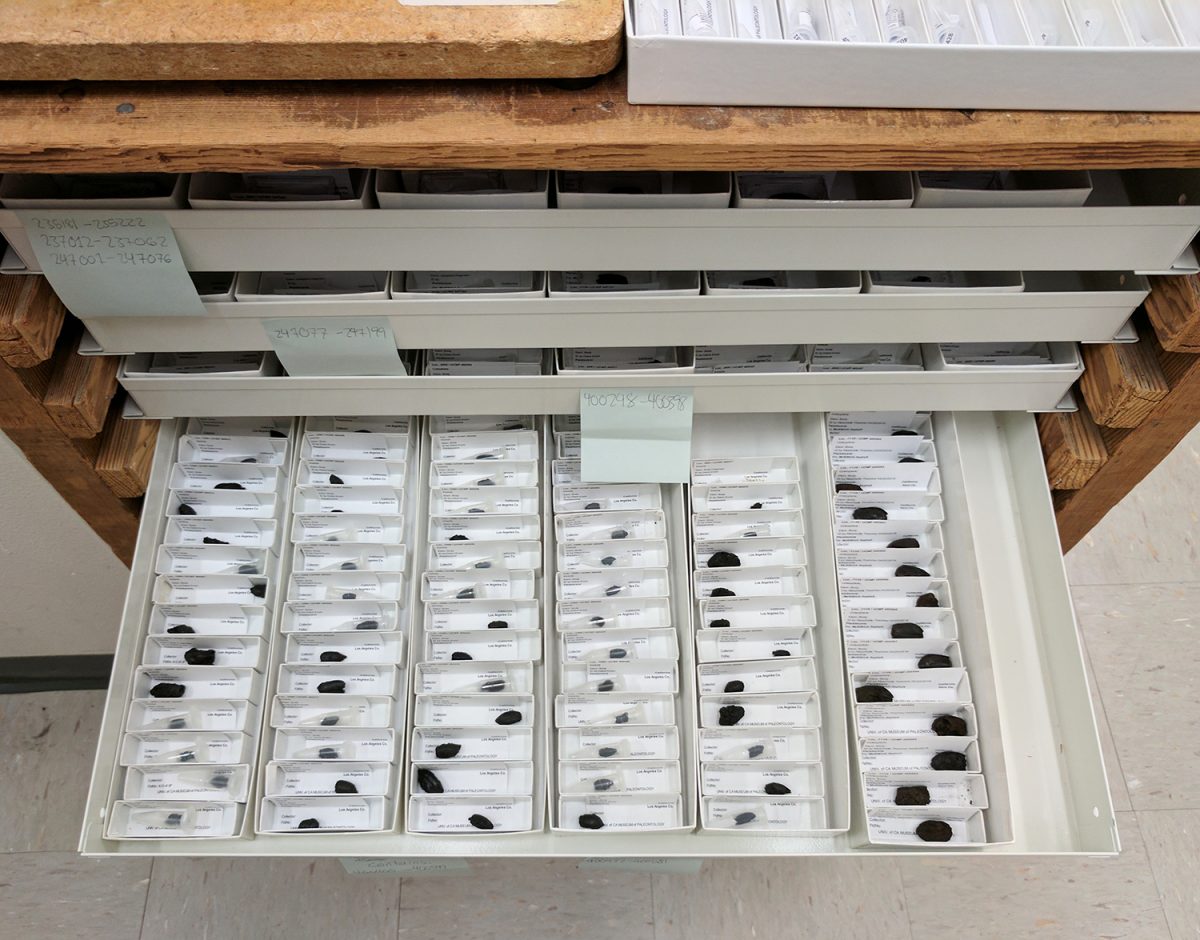
My first task was to organize the collection, arranging it in numerical order by specimen number. I then had to transfer the specimens into their new space-saving storage units. As part of this, I had to be sure to include all of the useful pieces of the damaged specimens and keep the specimens associated with their labels. The smaller specimens were rehoused in PCR tubes (plastic tubes with snap caps used in the field of molecular biology) with ethofoam plugs at the bottom to minimize the “rattle space,” a term coined by David Zelagin (Digitization Assistant at CU Boulder Natural History Museum). The PCR tubes would not only prevent further damage but also take up less space than the open trays.

After labeling, they were stored upright in museum trays using the cardboard separator inserts that come as part of the packaging for the glass vials. The larger specimens were placed in small friction lid plastic specimen boxes, with archival tissue paper at the bottom to minimize rattle space and storage space. I was able to complete reorganizing of the entire
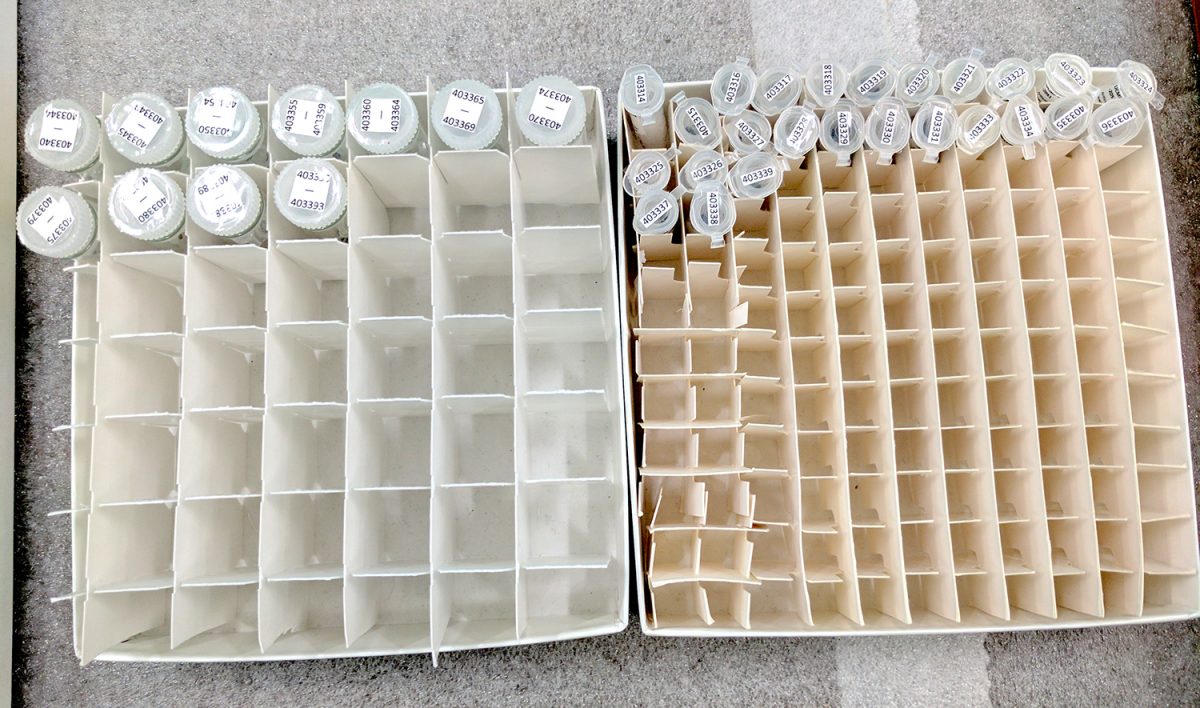
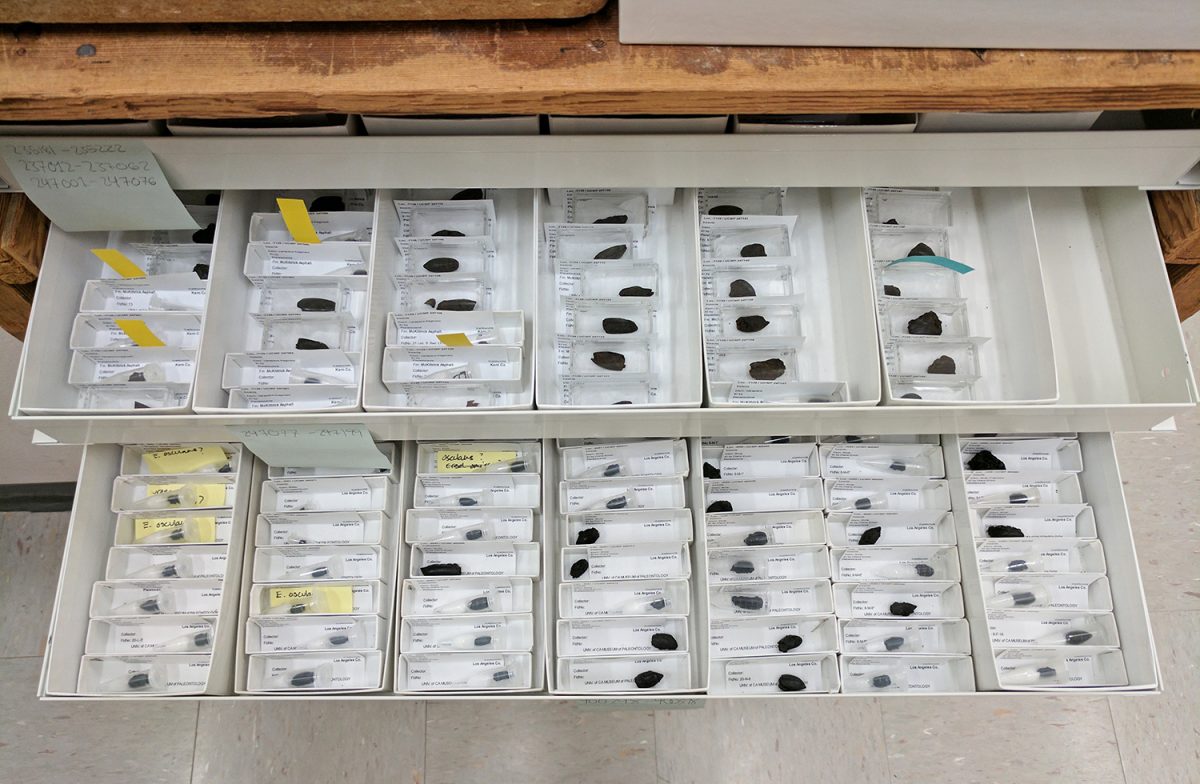
collection and rehousing all of the small and many of the larger specimens for ease of storage.
Though not the largest fossil insect collection, UCMP’s Cenozoic insects have contributed to the Fossil Insect Collaborative TCN by filling in geographic and temporal gaps not covered by the other TCN collections. I have enjoyed the opportunity to be part of the larger effort to organize and digitize this important collection so it can be accessed in an online database and more effectively used by researchers as well as the public.